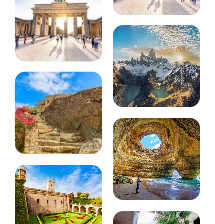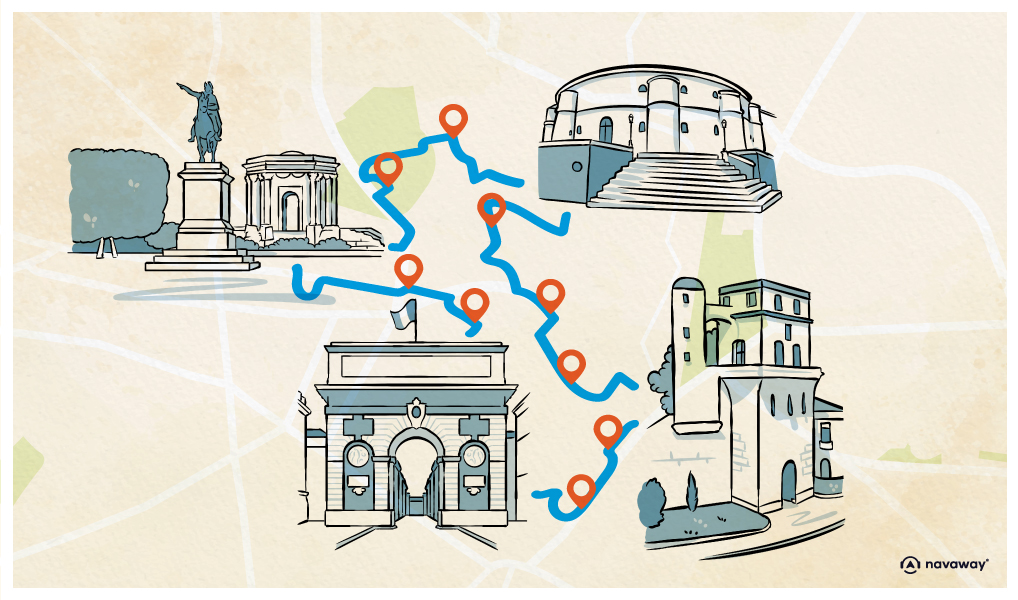
Visiting the Hérault: 15 places not to be missed
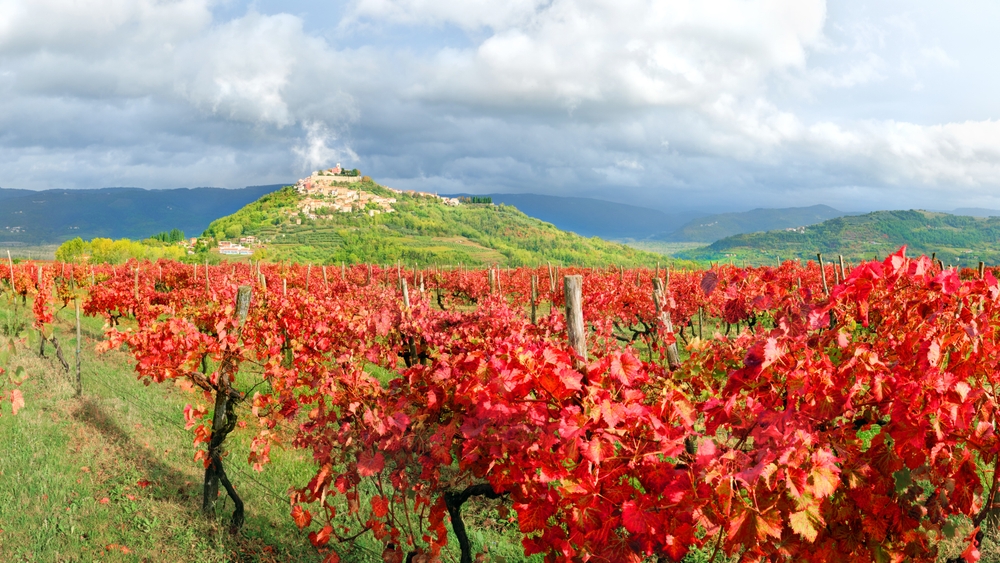
Between the Mediterranean and the hinterland, the Hérault reveals a mosaic of exceptional landscapes and heritage. From the medieval streets of its most beautiful villages to the turquoise waters of its beaches, via spectacular gorges and vineyards as far as the eye can see, this département in the south of France offers a diversity that will delight all travellers. Whether you’re a culture lover, a nature enthusiast or looking to relax by the Mediterranean, a visit to the Hérault promises unforgettable discoveries. Here is our selection of the 15 must-sees to discover all the facets of this exceptional region.
200 audioguided tours for cities all around the world
DownloadSee also the Hérault guide :
- Montpellier’s top 10 culinary specialities
- Top 5 activities in and around Montpellier
- Top 7 best hotels in Montpellier
- The 12 most beautiful walks in Hérault
- 20 excursions around Montpellier
- 20 must-see weekend ideas around Montpellier
- What to do around Montpellier with your family?
- Top 10 things to do in Cap d’Agde
- The 6 best beaches in Montpellier
- The 10 best bike rides in and around Montpellier
- The 9 best straw huts near Montpellier for an unforgettable summer
1. Montpellier, the dynamic capital of the Hérault region
You can’t visit the Hérault without visiting Montpellier, its radiant prefecture. Nicknamed “La Surdouée”, this vibrant university town harmoniously blends its historic heritage with modern architecture. Its medieval centre, l’Écusson, is lined with cobbled streets and magnificent 17th and 18th century town houses.
Place de la Comédie (Place de la Comédie, 34000 Montpellier, rated 4.2/5 on Google out of 4,123 reviews) is the beating heart of the city. With its Trois Grâces fountain and opera house, it’s an inviting place to stroll between its many cafés and shops. Don’t miss the Peyrou promenade and its Saint-Clément aqueduct, Saint-Pierre cathedral with its imposing porch, or the Faculty of Medicine, the oldest active faculty in the world.
Download the audio-guided tour to discover Montpellier on foot and on your own
For a complete immersion in the city’s history and secrets, let yourself be guided by the Navaway audio tour. This 3.5km route takes you through 19 places of interest in the Écusson and Montpellier’s main monuments, with captivating anecdotes and enriching historical commentaries. It’s a fun, self-guided experience, so you won’t miss any of Montpellier’s must-sees.

2. Saint-Guilhem-le-Désert, a listed medieval jewel
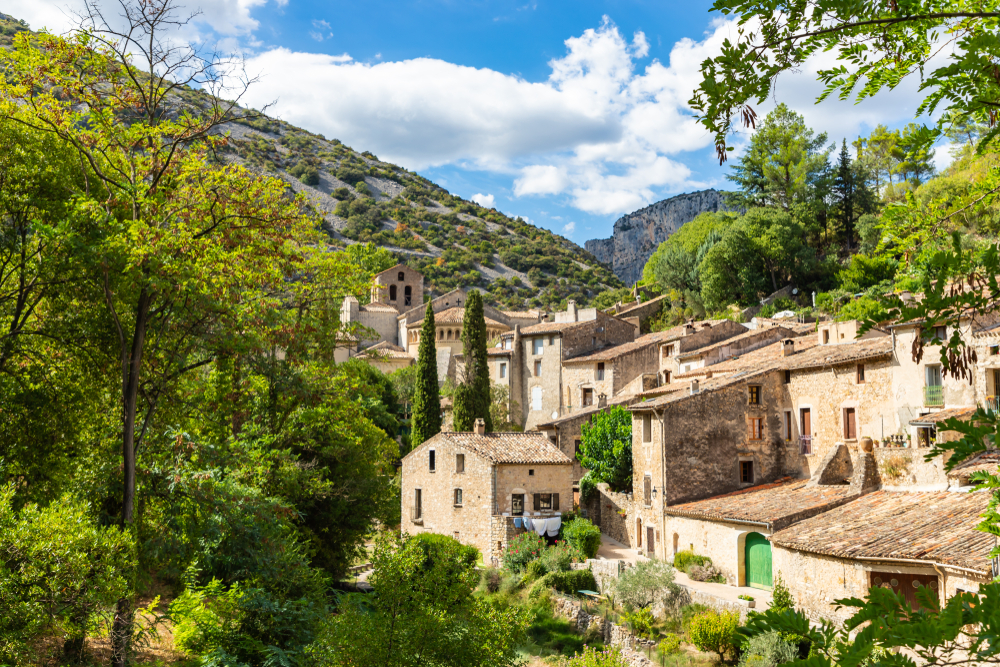
Nestling in the heart of the Hérault gorges, Saint-Guilhem-le-Désert is one of France’s most beautiful villages and a UNESCO World Heritage Site. This medieval village, built around the Gellone Abbey founded in the 9th century, exudes a unique and timeless atmosphere. Its narrow streets with ochre stone facades wind their way to the majestic Place de la Liberté, shaded by a hundred-year-old plane tree.
Gellone Abbey (Rue Fontaine, 34150 Saint-Guilhem-le-Désert, rated 4.7/5 on Google out of 1,890 reviews) is the architectural gem of the village. Its Romanesque cloister, centuries-old vaults and crypt are well worth a visit. Nearby, the Hérault gorges offer spectacular scenery, perfect for hiking and canoeing. When you’re exploring the region, don’t forget to take the Navaway itinerary to discover Montpellier and the surrounding area too.
3. Sète, the Venice of Languedoc and its canals

Nicknamed “the singular island” by Paul Valéry, who was born here, Sète enchants visitors with its authentic maritime character. As the leading fishing port in the French Mediterranean, the town’s canals are lined with colourful facades, creating a unique atmosphere between the sea and the Etang de Thau. Mont Saint-Clair (Montée des Pierres Blanches, 34200 Sète, rated 4.6/5 on Google out of 671 reviews) offers an exceptional panoramic view of the town, coastline and lakes.
Don’t miss the old port and its quayside restaurants where you can sample tielles sétoises, the local speciality. The marine cemetery, home to the tomb of Paul Valéry, majestically overlooks the Mediterranean. In summer, nautical jousting perpetuates a colourful, centuries-old tradition. For a complete tour of the département, consider exploring other towns on the region’s audio-guided tours.
4. The Cirque de Navacelles, a spectacular geological site

A true natural wonder, the cirque de Navacelles bears witness to millions of years of erosion. This geological curiosity, classified as a Grand Site de France, is the result of an abandoned meander of the river Vis that carved out a canyon over 300 metres deep. At the far end of this spectacular cirque, the small hamlet of Navacelles seems frozen in time, surrounded by vertiginous cliffs.
There are several viewpoints where you can admire this breathtaking panorama. The north belvedere (Blandas, 30770, rated 4.7/5 on Google out of 3,452 reviews) offers an unforgettable bird’s-eye view. Hiking trails lead down into the heart of the cirque to discover the Vis waterfall and its old mill. An exceptional natural site that perfectly illustrates the geological wealth of the Hérault.
5. Lake Salagou and its red earth
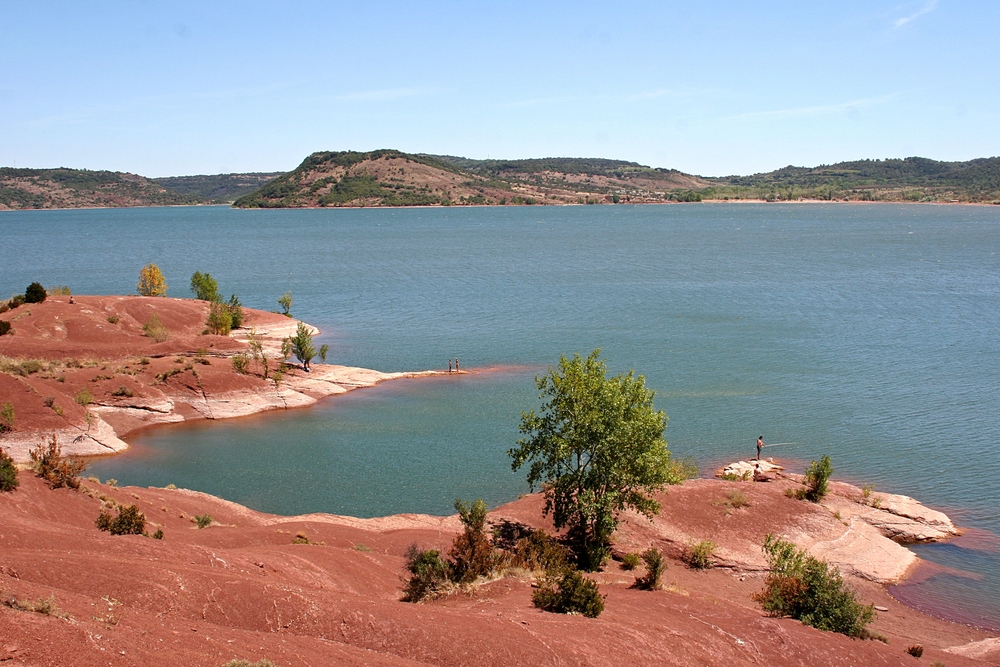
Lac du Salagou reveals a lunar landscape that is unique in France. Artificially created in the 1960s, this 750-hectare lake is distinguished by its characteristic red earth banks, due to the presence of iron oxide. This colour contrasts with the intense blue of the water to create a striking natural scene, particularly photogenic at sunset.
The lake is an ideal playground for water sports enthusiasts, with sailing, windsurfing, canoeing and swimming all on the programme. Cyclists and hikers will love the path that circles the lake, offering changing views of this exceptional setting. Nearby, the cirque de Mourèze (34800 Mourèze, rated 4.6/5 on Google for 2,108 reviews) features an equally impressive dolomitic rocky chaos.
6. Pézenas, the town of Molière
Pézenas exudes art and history around every corner. This town of art and history was the residence of the Governors of Languedoc and played host to Molière’s troupe on several occasions in the 17th century. The playwright drew inspiration for several of his works here, earning Pézenas the nickname of the “Versailles of Languedoc”.
A stroll through the historic centre reveals sumptuous Renaissance town houses, craft shops and hidden courtyards. The Molière national theatre (Place du 14 Juillet, 34120 Pézenas, rated 4.4/5 on Google for 147 reviews) continues the town’s theatrical tradition. Gourmets will love the little Pézenas pâtés, a sweet and sour speciality inherited from Lord Clive, who stayed in the town in the 18th century.
7. Béziers and the Fonséranes locks
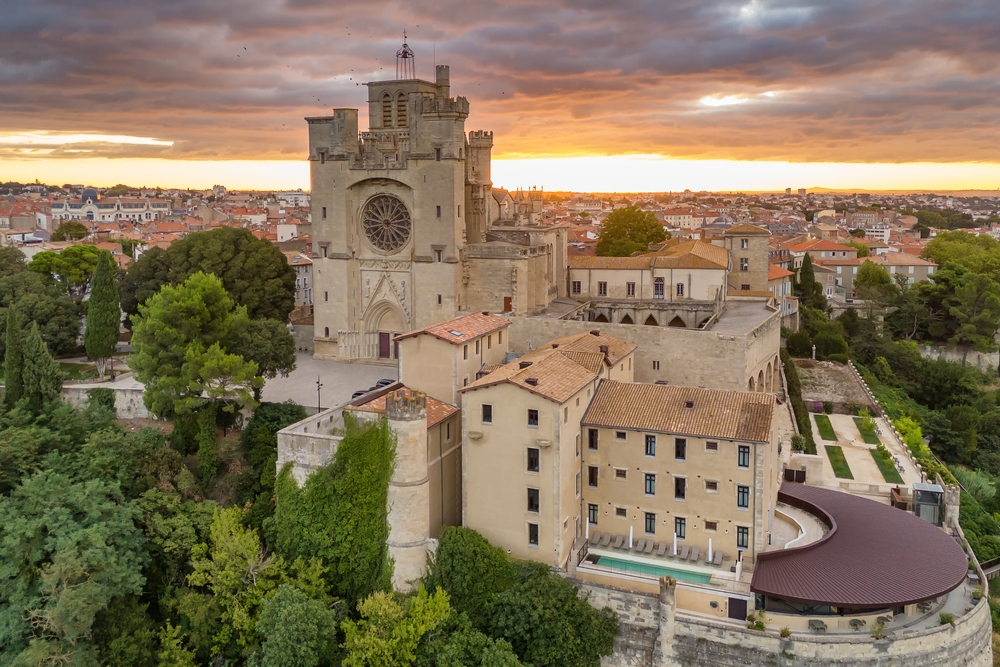
Béziers, a two-thousand-year-old city, proudly dominates the Languedoc plain from its rocky outcrop. The cathedral of Saint-Nazaire (Place de la Révolution, 34500 Béziers, rated 4.5/5 on Google out of 1,542 reviews), an imposing Gothic fortress, watches over the town and offers panoramic views of the surrounding area and the Orb valley from its cloister.
But the jewel in Béziers’ crown is undoubtedly the Fonséranes locks (1 Allée de l’Ecluse, 34500 Béziers, rated 4.6/5 on Google for 8,374 reviews), a technical feat on the UNESCO-listed Canal du Midi. This staircase of water made up of nine locks enabled barges to cross a 21-metre difference in height. The magnificently landscaped site boasts a museum and a walking trail to help visitors understand how this 17th-century work of art worked.
8. Cap d’Agde and its Mediterranean beaches
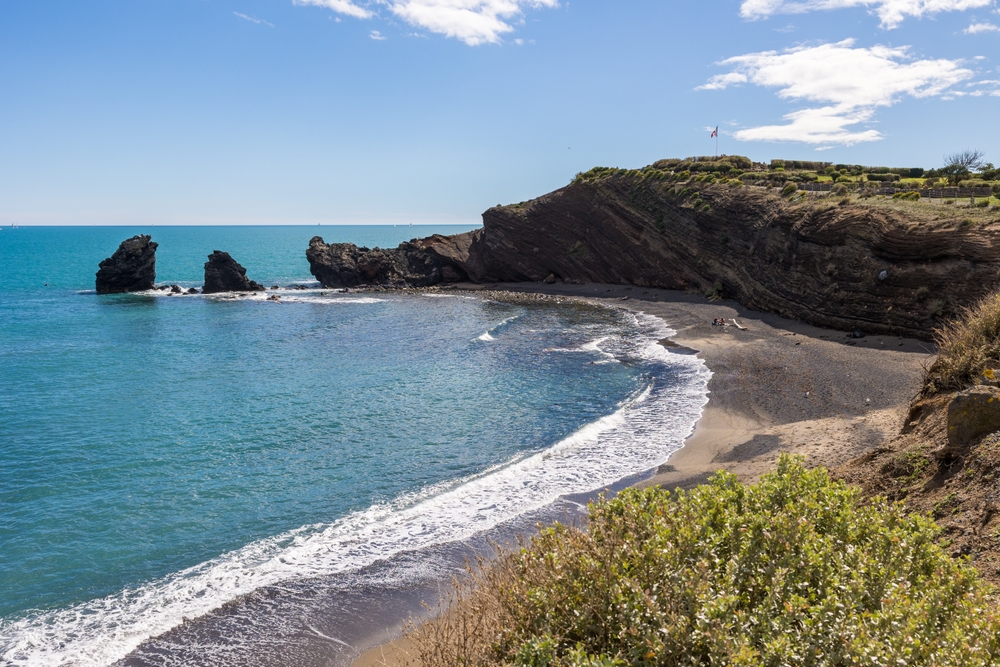
Cap d’Agde combines historical heritage with seaside pleasures. This renowned seaside resort boasts over 20 kilometres of fine sandy beaches along the Mediterranean. The Grande Conque beach (Avenue des Iles d’Amérique, 34300 Agde, rated 4.6/5 on Google for 1,203 reviews), nestling between volcanic cliffs, offers a particularly popular unspoilt natural setting.
The Musée de l’Éphèbe (Mas de la Clape, 34300 Agde, rated 4.3/5 on Google out of 348 reviews) features an exceptional collection of underwater archaeology, including the famous Ephèbe d’Agde, a bronze statue dating from the 4th century BC. The old town of Agde, built of black volcanic basalt, is also well worth a visit, with its fortified church of Saint-Étienne and its traditional fishing port.
9. The Hérault gorges and the Devil’s bridge

The Hérault gorges offer a spectacular natural corridor between the Causses and the Mediterranean. These limestone gorges, carved out by the river, offer a variety of landscapes alternating between rock faces, holm oak forests and pebble beaches. The Pont du Diable (Route de Saint-Guilhem-le-Désert, 34190 Aniane, rated 4.6/5 on Google out of 1,785 reviews), a UNESCO World Heritage site, is the emblematic monument of the gorges.
This 11th-century Romanesque structure, one of the oldest medieval bridges in France, spans the Hérault with an elegant arch. According to legend, only the Devil could have built such a daring bridge, hence its name. Below, the turquoise waters invite you to take a dip in an unspoilt natural setting. Canoeing down the gorges from Saint-Bauzille-de-Putois to the Pont du Diable is a great way to see the Hérault in a different way.
10. The Grotte des Demoiselles, an underground cathedral
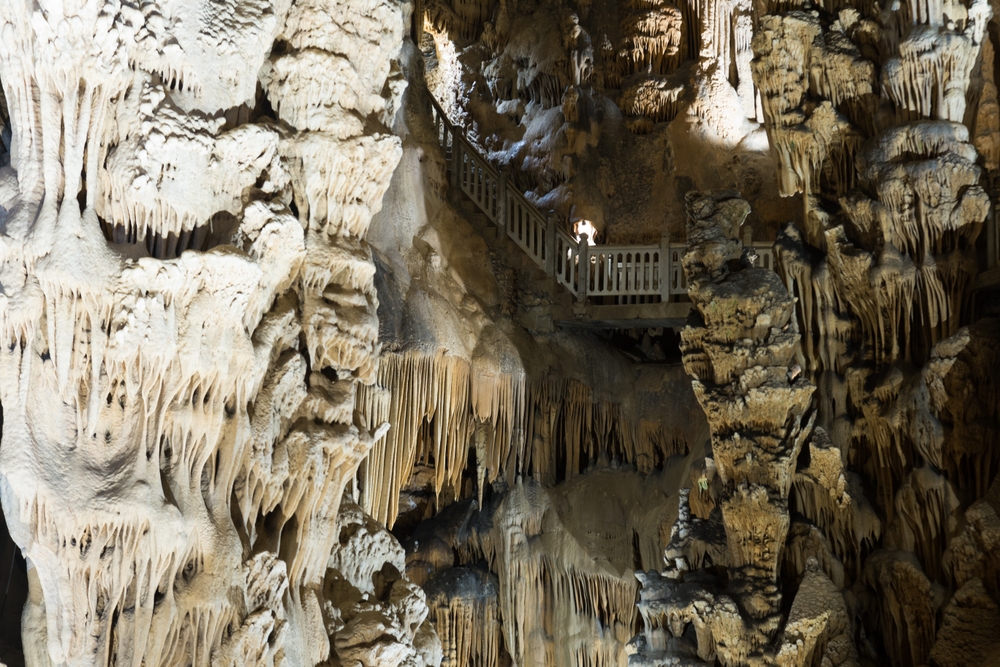
The grotte des Demoiselles (Route de la Grotte, 34190 Saint-Bauzille-de-Putois, rated 4.7/5 on Google out of 1,266 reviews) impresses with its cathedral-like dimensions. Accessible by a funicular carved into the rock, this natural cave reveals a gigantic chamber 120 metres long, 80 metres wide and 50 metres high, adorned with astonishingly shaped concretions dating back thousands of years.
The highlight of the show is the stalagmite of the “Virgin and Child”, a natural formation several metres high that effectively evokes a Madonna carrying her child. The play of light reveals the limestone draperies, organs and fistulas that adorn the vaults of this underground wonder. The guided tour, which lasts around an hour, immerses visitors in a fascinating mineral universe, witness to millions of years of slow geological formation.
11. The Clamouse cave, a concentration of crystals
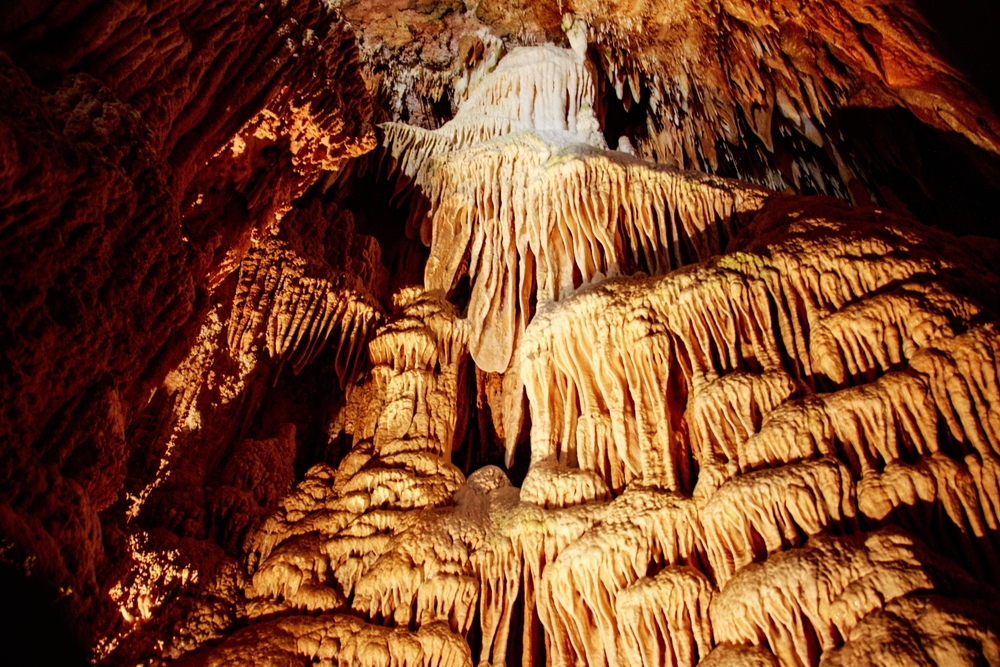
Located near the Pont du Diable and Saint-Guilhem-le-Désert, the Clamouse cave (34150 Saint-Jean-de-Fos, rated 4.6/5 on Google for 1,061 reviews) stands out for its exceptional wealth of crystallisations. Considered to be home to the finest concentration of crystals in Europe, this geological cave marvels at the diversity and beauty of its concretions: aragonites, eccentrics, draperies and fistulas line its galleries for almost a kilometre.
The underground trail, equipped with environmentally-friendly LED lighting, allows visitors to admire these natural wonders formed drop by drop over thousands of years. For the more adventurous, the cave also features a speleopark and an underground escape game, offering a fun and immersive experience in the bowels of the earth. A must for anyone wishing to explore the exceptional natural heritage of the Hérault region.
12. Maguelone cathedral, a spiritual island
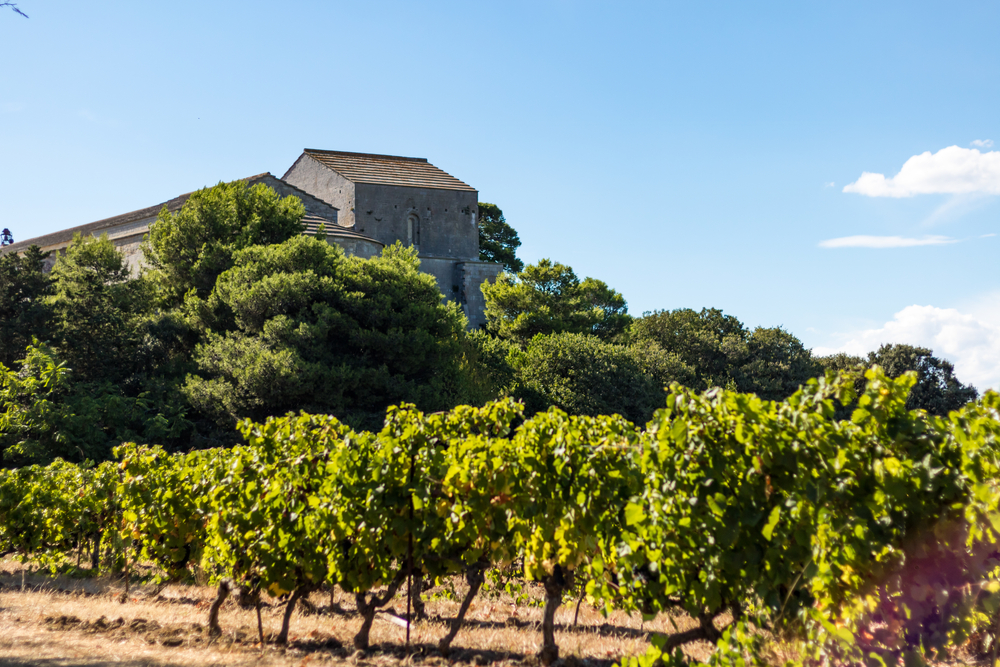
Isolated on an islet between the sea and the lagoon, Maguelone cathedral (34750 Villeneuve-lès-Maguelone, rated 4.6/5 on Google out of 1,387 reviews) exudes a unique mystical atmosphere. This fortified 12th-century Romanesque building, the former cathedral of a vanished bishopric, stands proudly amidst vineyards and the lagoon.
The cathedral’s massive architecture, with its crenellated ramparts, bears witness to a tormented past marked by Saracen attacks. The interior, sober and uncluttered, is an invitation to meditation. The site hosts concerts and cultural events during the summer, benefiting from remarkable acoustics. The immediate surroundings, owned by the Compagnons d’Emmaüs who cultivate vines there, offer some lovely walks between the ponds and the Mediterranean.
13. The Espiguette beach and its wild dune
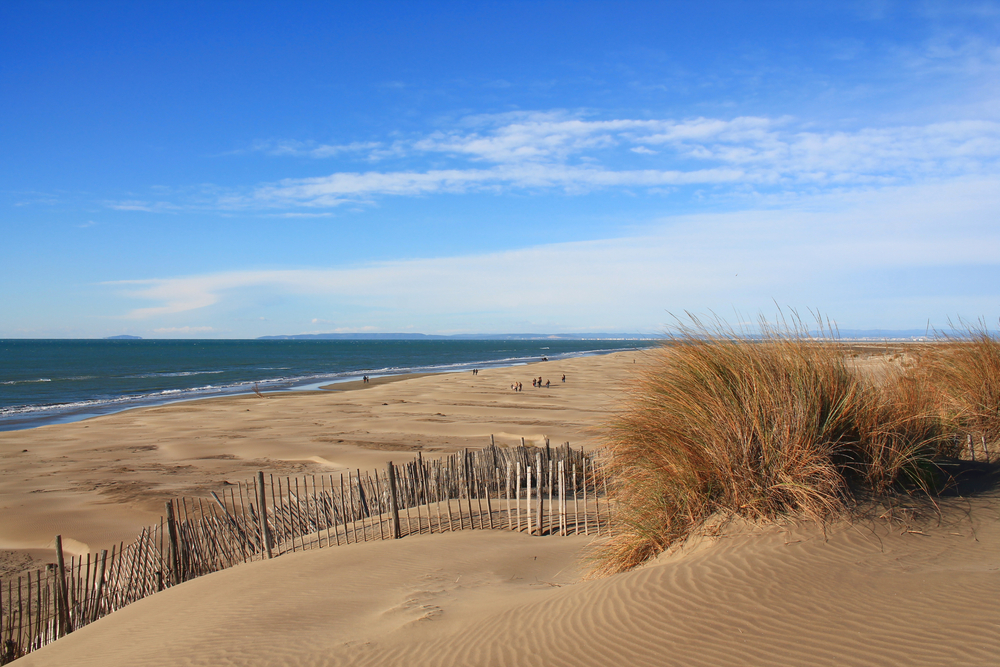
The Espiguette beach (30240 Le Grau-du-Roi, rated 4.6/5 on Google for 2,874 reviews), although technically located in neighbouring Gard, is a natural extension of the Hérault coastline and well worth a visit. This kilometre-long strip of sand remains one of the last wild beaches in the region, dominated by an emblematic lighthouse and protected by impressive dunes.
The Grand Travers, in the Espiguette sector, reveals an almost desert-like landscape where the shifting dunes sometimes reach a height of ten metres. This unspoilt natural site lends itself wonderfully to long walks facing the Mediterranean, kitesurfing and contemplating the sunsets. Cycling from La Grande-Motte or Le Grau-du-Roi makes for a pleasant ride along the coastline.
14. Fontcaude Abbey, a hidden Cistercian jewel
Nestling in a wooded valley in the Béziers hinterland,Fontcaude Abbey (34320 Cabrerolles, rated 4.5/5 on Google for 157 reviews) remains a well-kept secret in the Hérault region. Founded in the 12th century by the Cistercian order, this abandoned abbey was restored in the 20th century to its former serenity.
The sober, elegant Romanesque architecture typical of the Cistercians can be seen in the cloister, abbey church and convent buildings. The surrounding countryside, with a stream running through it, adds to the charm of the place. The abbey now hosts temporary exhibitions, concerts and artists’ residencies, perpetuating its spiritual and cultural vocation in an unspoilt green setting.
15. Pic Saint-Loup, the Sainte-Victoire of the Hérault region
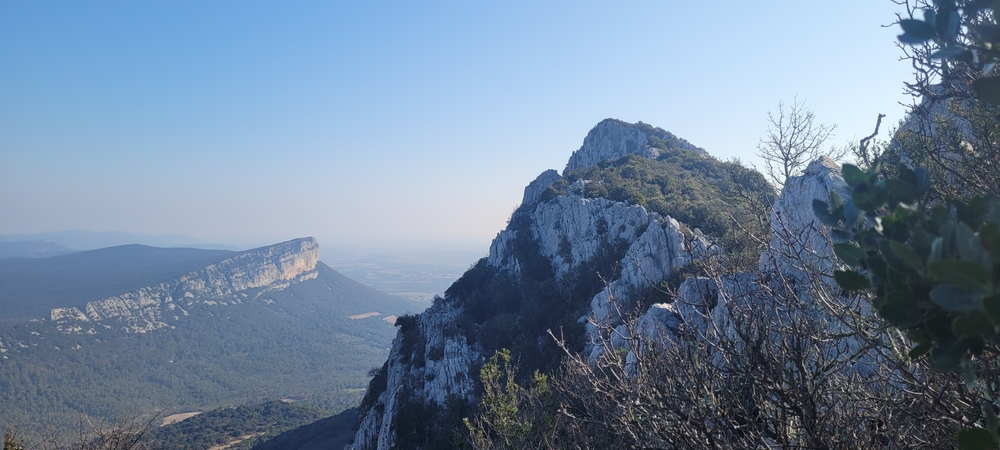
The Pic Saint-Loup (34270 Saint-Mathieu-de-Tréviers, rated 4.7/5 on Google for 1,285 reviews), an emblematic mountain peaking at 658 metres, majestically dominates the Montpellier hinterland. This rocky limestone bar, visible from Montpellier on a clear day, is one of the department’s natural symbols and gives its name to a famous wine appellation.
The ascent of the Pic Saint-Loup, accessible via several hiking trails, rewards walkers with an exceptional 360-degree panorama of the Cévennes, the Mediterranean and the Languedoc plain. At the foot of the peak are a number of prestigious vineyards producing AOC Pic Saint-Loup wines, renowned for their quality. The discovery of this terroir is rounded off by tastings in the surrounding cellars and visits to villages of character such as Saint-Martin-de-Londres.
In conclusion, visiting the Hérault is a multifaceted destination that will appeal to all types of traveller. With its exceptional medieval heritage, magnificent natural sites, Mediterranean beaches and renowned vineyards, this département in the south of France offers an unsuspected wealth of attractions. Whether you choose to explore Montpellier with an audio guide, soak up the mystical atmosphere of Saint-Guilhem-le-Désert or explore the spectacular gorges of the cirque de Navacelles, each place tells a unique story. You can feel and experience the Hérault, between the authenticity of the Languedoc and the gentleness of the Mediterranean, for unforgettable memories etched between land and sea.
FAQ
When is the best time to visit the Hérault?
The best time to visit the Hérault is from April to October. Spring (April-May) and autumn (September-October) offer pleasant temperatures, fewer crowds and green and colourful landscapes. Summer (June-August) is ideal for enjoying the beaches, but is also very busy for tourists. Winter remains mild, allowing you to explore the cultural heritage in peace and quiet.
How long does it take to visit the Hérault?
To discover the main highlights of the Hérault region, allow at least 5 to 7 days. A long weekend will allow you to explore Montpellier and the surrounding area. A full week will allow you to combine the city, its picturesque villages, natural sites and beaches. For an in-depth exploration including hiking and water sports, allow 10 to 15 days.
How do I get around the Hérault?
The car is still the most practical way to visit the Hérault, particularly for access to natural sites and hilltop villages. However, the department has a good public transport network. The TER serves the main towns (Montpellier, Béziers, Sète, Agde). Montpellier has an efficient tram network. For an environmentally-friendly approach, there are numerous cycle paths along the coast and the Canal du Midi.
What are the culinary specialities of the Hérault not to be missed?
The Hérault delights gourmets with its Mediterranean specialities: tielle sétoise (octopus pie), oysters and mussels from the Etang de Thau, brandade from Nîmes, pélardon (goat’s cheese), petits pâtés from Pézenas and berlingots from Pézenas. As for wines, the Pic Saint-Loup, Saint-Chinian, Faugères and Languedoc AOCs are among the most famous. And don’t miss the local olive oil and products from the garrigue.
Is the Hérault ideal for family holidays?
The Hérault is an ideal destination for families. The fine sandy beaches are perfect for children, and there are plenty of activities just for them: aquariums (Planet Ocean in Montpellier, Aquarium du Cap d’Agde), animal parks (Zoo de Lunaret free of charge), spectacular caves, boat trips, adventure courses and leisure centres. The medieval villages fascinate young and old alike, and the easy hiking trails make for great family outings.
200 audioguided tours for cities all around the world
Download